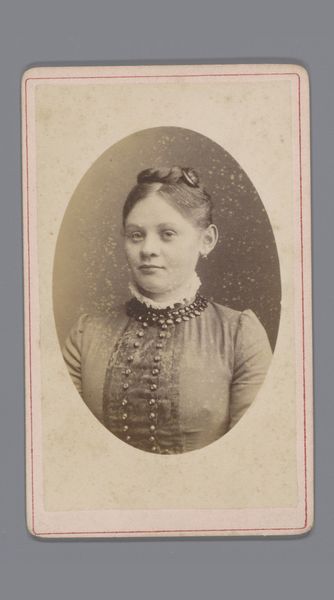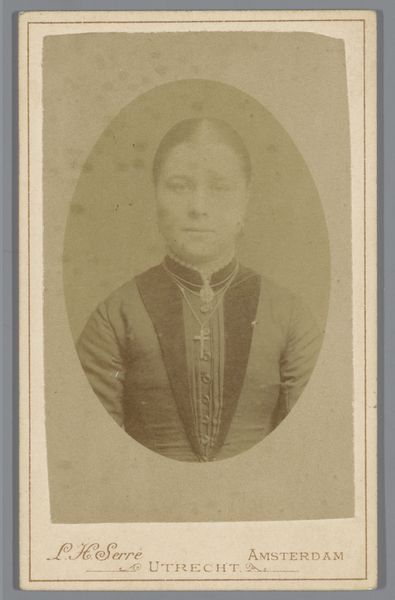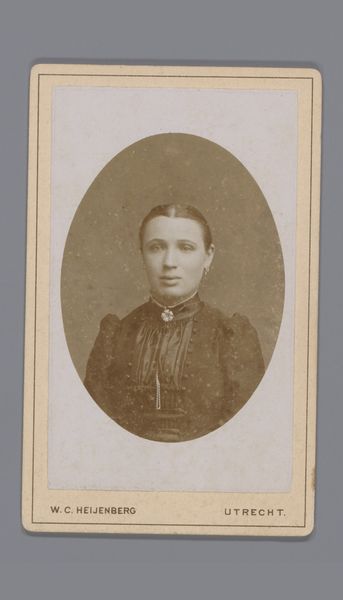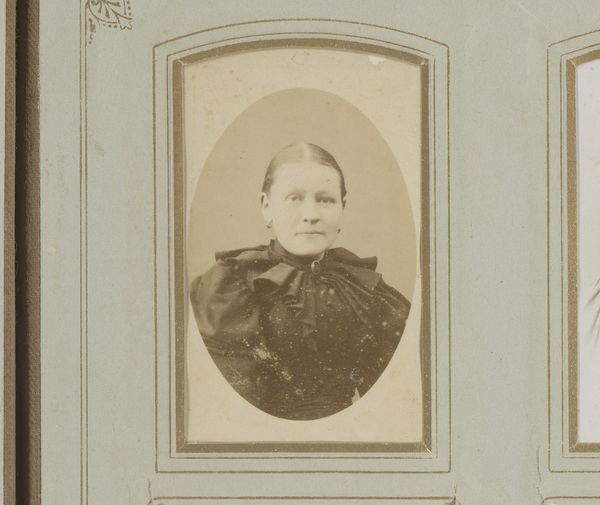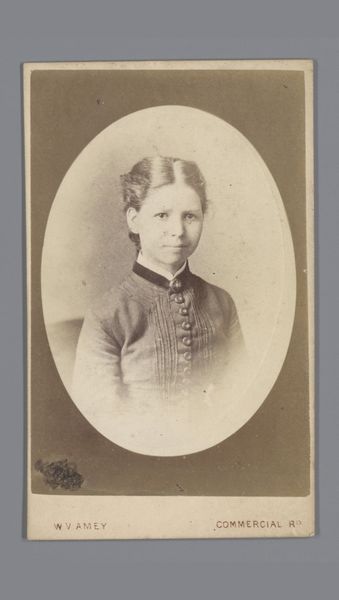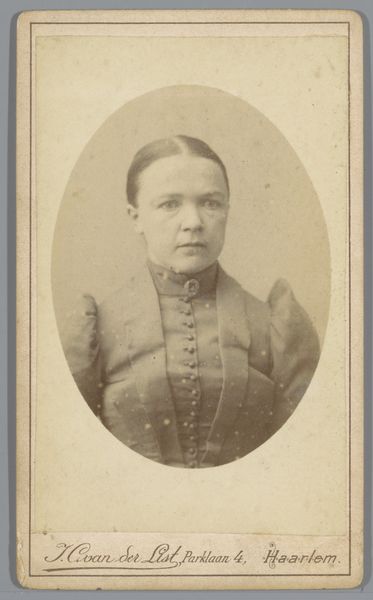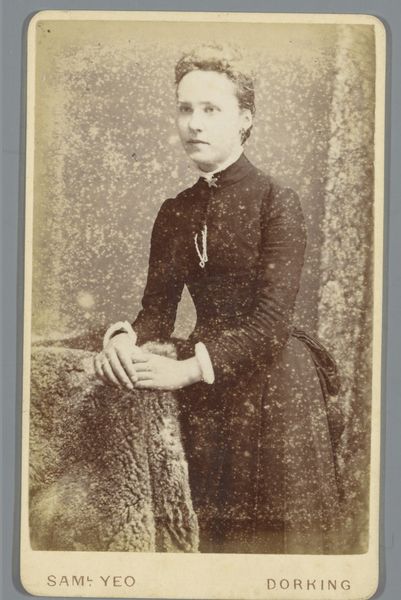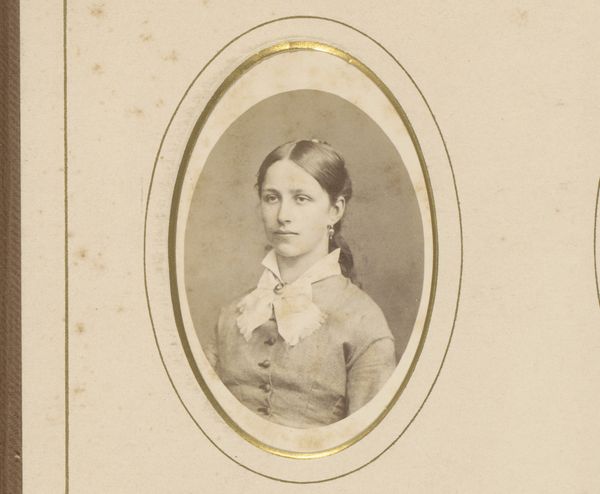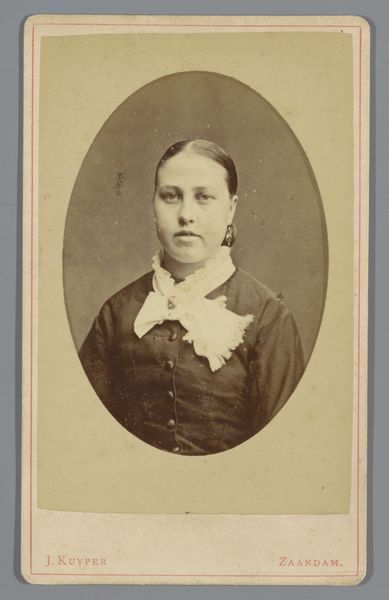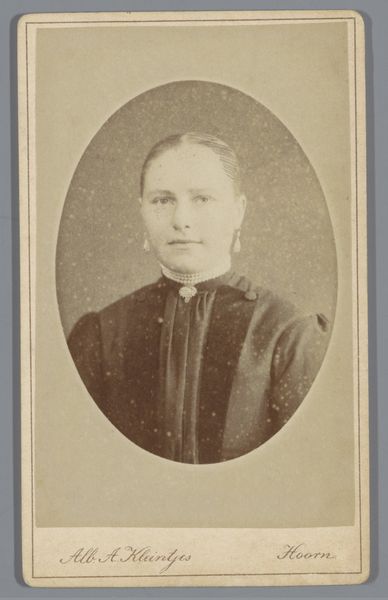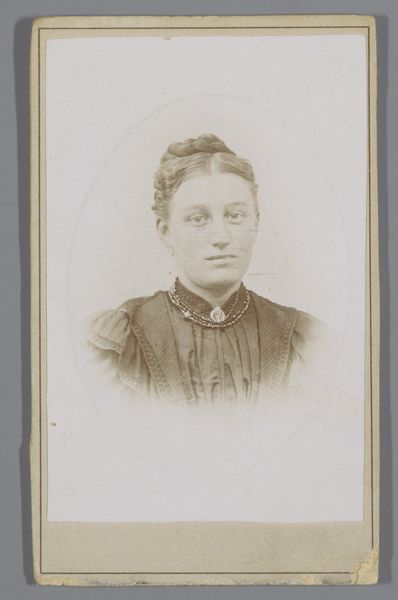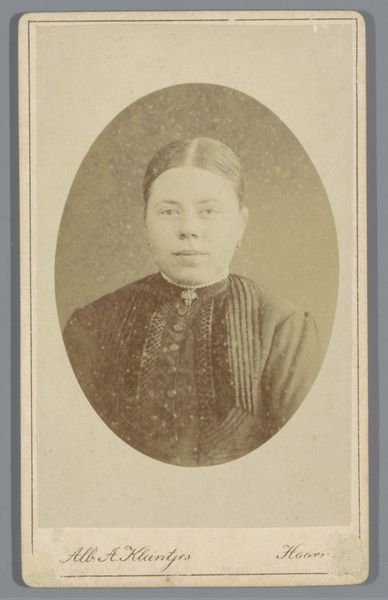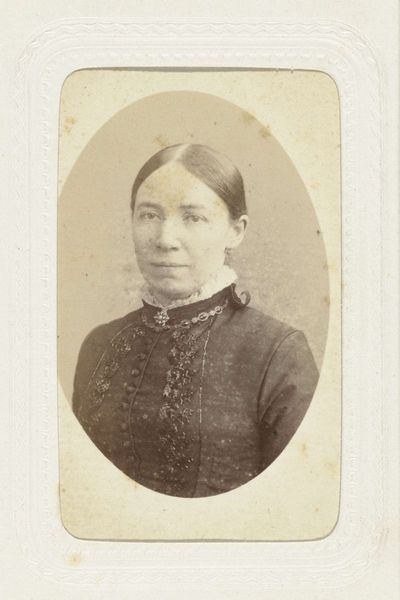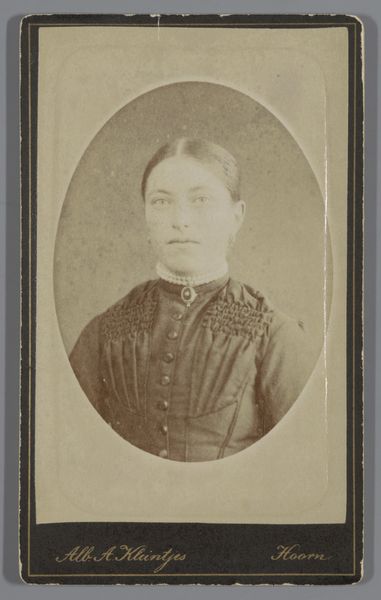
photography
#
portrait
#
photography
#
child
#
19th century
Dimensions: height 98 mm, width 63 mm
Copyright: Rijks Museum: Open Domain
Editor: Here we have a photograph, titled "Portret van Ch.A. Matthes-Doorman als kind," made sometime between 1864 and 1890. Looking at the sepia tones and the formal pose, there’s a certain somberness that I can’t help but notice. What historical context should we keep in mind when approaching a work like this? Curator: Well, photographs like these from the 19th century were often highly staged, deliberate presentations of social standing. Consider how this image functions within the historical development of portraiture. Before photography, painted portraits were exclusive to the wealthy, reflecting power dynamics. The rise of photography offered a more accessible form of portraiture to the middle class, reshaping who had the right to be visually represented and how. Do you notice anything about her attire? Editor: Yes, the clothing seems rather formal for a child. The high collar and simple bow, although demure, signal some degree of formality. Curator: Exactly. Now think about what these sartorial choices might be communicating about the family's aspirations or social performance at the time. These photographic studios operated as key players in shaping societal expectations, providing carefully constructed images that perpetuated ideas about class, gender, and childhood itself. In what ways might photography like this have influenced those perceptions? Editor: So it wasn't just about capturing a likeness; it was about carefully constructing an image that spoke volumes about one's place in the world. I guess, in a way, that explains why I felt the image was somber; the stakes of representation seem so much higher. Curator: Precisely! By viewing art through the lens of social and cultural history, we can decipher its impact. The photograph reminds us that representations always bear the fingerprints of socio-political realities. Editor: This really changes how I see these portraits. Now I’m looking at it not just as a depiction of a child, but as a curated statement. Thank you.
Comments
No comments
Be the first to comment and join the conversation on the ultimate creative platform.
